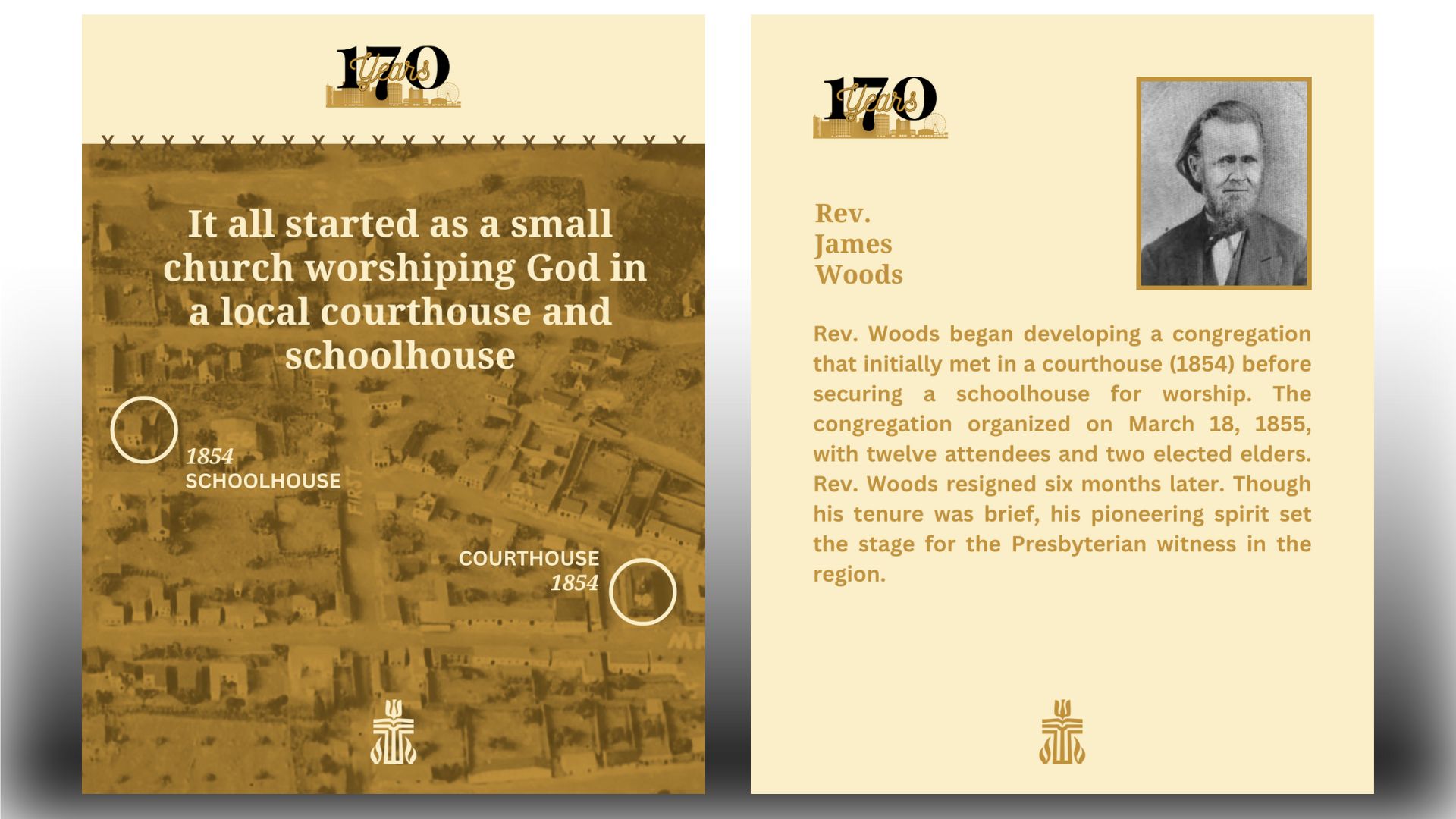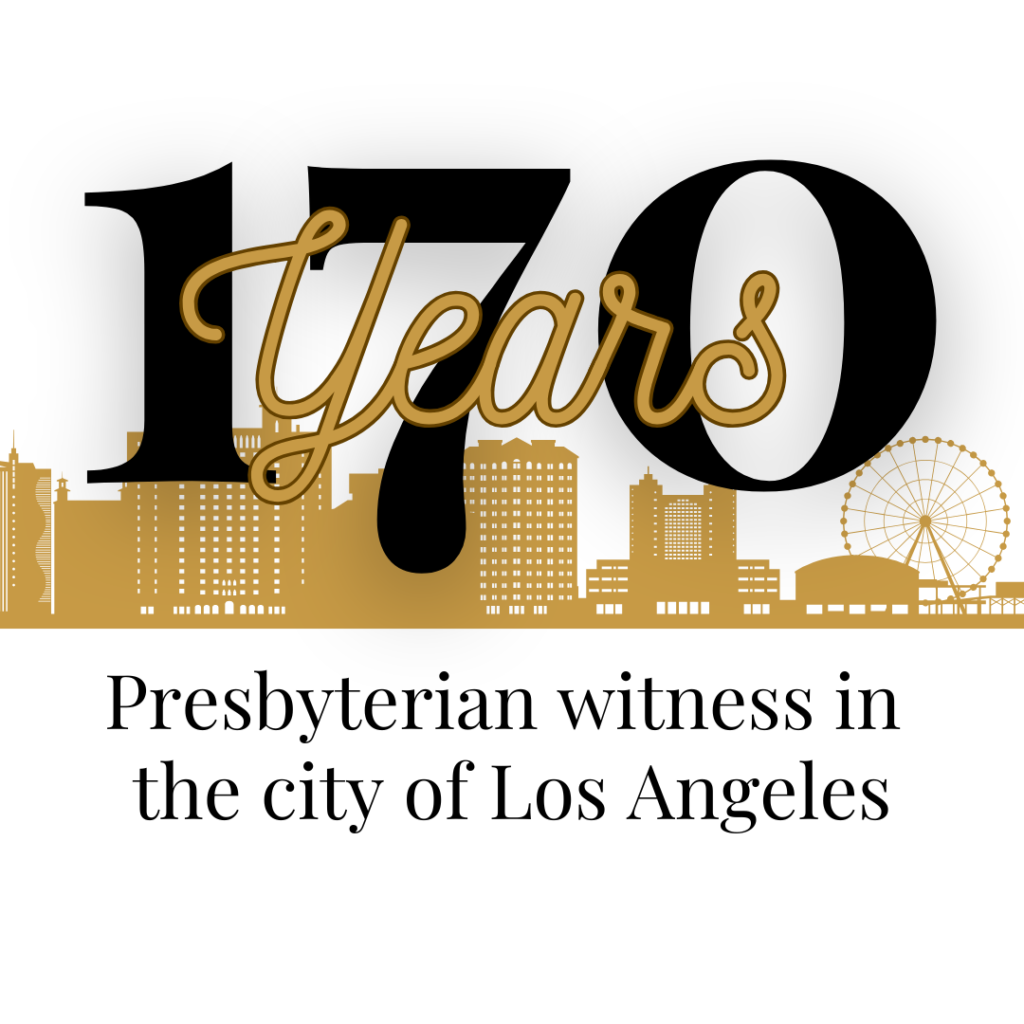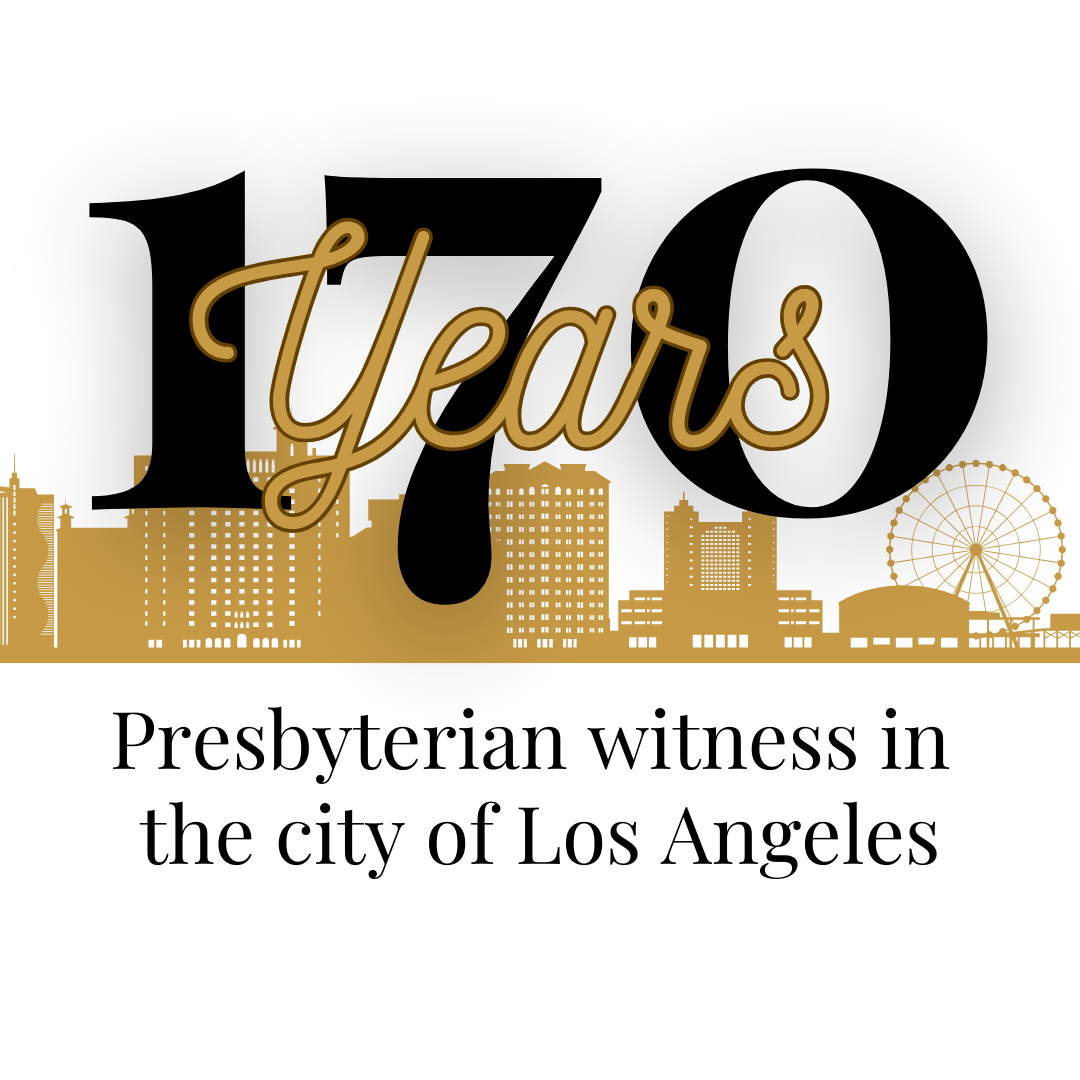When Presbyterians Rode into Town: Our Gritty Origins in Early Los Angeles
Based on research by Darren Pollock

Before Los Angeles became a sprawling metropolis of dreams and movie stars, it was a rough and tumble frontier town where horse races tore down dusty streets, saloons buzzed with rowdy drinkers, and gallows loomed over courthouse squares. Into this wild setting, in 1854, came a handful of courageous souls who believed that instead of another saloon, Los Angeles could use a Presbyterian church, or perhaps more than one.
Thus began the rocky, determined story of Presbyterianism in Los Angeles — a story marked by faith, grit, and more than a little drama.
A Dangerous Mission Field
Los Angeles County was officially formed in 1850, with a population of about 2,500 — and a murder rate that would shock even modern standards (31 murders in one year!). Although California had been admitted to the Union as the 31st state in 1850, these early ministers still treated Los Angeles like a foreign mission field.
Rev. John Waldo Douglas was one of the first to venture in, preaching in the early 1850s. But it was Rev. James Woods, who arrived in 1854, who laid serious foundations. His first sermons — “The Greatness of God” and “Christ Died for Us” — were preached in the old adobe courthouse itself, and within spitting distance of an area often used for public executions.
Support was meager. Woods survived thanks to the generosity of civic leaders like Benjamin Davis Wilson (after whom Mount Wilson was named). Despite constant illness and the colorful atmosphere of downtown L.A. (he wrote of drunks and street horse races right outside his home), Rev. Woods pressed on.
A Church Among the Gallows
On March 18, 1855, First Presbyterian Church of Los Angeles was organized with just 12 members. Early leadership struggles were real: one elected elder refused to serve because he couldn’t subscribe to the Westminster Confession, and the other elected elder, an Irish schoolteacher, postponed his installation.
Meanwhile, Rev. Woods lamented the morality that he saw in the town (six weeks after the church was organized Rev. Woods preached on Sodom and Gomorrah) — not exactly the easiest soil for planting a church. Another minister soon after would refer to the city as “the hardest nut to crack he had ever tried.” Still, there was optimism for the city, and for its Christian potential. A San Francisco-based Presbyterian journal reported in 1860: “The day is coming when the “City of the Angels” will be populous— it may be, more populous of men and women and children playing in its streets, than it has ever been of angels. Los Angeles will doubtless be one of the largest cities of Southern California. Now is the time to sow the seed.”
Hard Times and Harder Choices
By the fall of 1855, Rev. Woods had returned to northern California to plant more churches, and his successor in L.A., Rev. Thomas K. Davis, struggled to hold the flock together. In the 1860s, Presbyterian property was transferred (without the congregation’s assent or knowledge) into city and Episcopal ownership — a problem that would take nearly two decades and a major lawsuit to partially resolve.
At one point, from 1862 to 1869, there was no Presbyterian minister in Los Angeles at all. Yet, the women of the church kept the faith alive through sewing societies, prayer meetings, and steadfast involvement.
The Boom Years Begin
Help finally arrived in 1869, with a new wave of missionary pastors, and by 1872, the Presbytery of Los Angeles was officially formed with six congregations spread widely through the southern part of the state— San Buenaventura, Santa Barbara, San Diego, Anaheim, Calvary (Wilmington), and Westminster. From that point, growth exploded.
- First Presbyterian Church of Los Angeles, reorganized with 20 members (1874)
- First Presbyterian Church of San Bernardino (1874)
- Pasadena Presbyterian Church (1875)
- Santa Monica Presbyterian Church (1875)
- Second Presbyterian Church of L.A. (1882)
- Occidental College founded by Presbyterians (1887)
- Churches blossomed across the region: Glendale, Burbank, Newhall, Acton, Fullerton, Monrovia, Long Beach, and beyond.
By the end of the 19th century, Presbyterian congregations dotted the map from the beaches of Santa Monica to the valleys of San Fernando. One account from 1896 reported twelve Presbyterian churches in Los Angeles (a city by then with a population of 100,000) with a combined membership of over 3,000.
Faithful in a Changing City
By 1895, the reorganized First Presbyterian Church of Los Angeles had grown so much it split into two congregations — amid spirited (and litigious) debates over property and leadership. But one thing remained clear: the Presbyterians had not just arrived in Los Angeles; we had taken root. The early Presbyterian pioneers of L.A. faced wild streets, rampant public drunkenness, bullfights on the Sabbath, and enormous cultural hurdles. Yet through perseverance and the faithfulness of ordinary people, they helped lay a spiritual foundation that continues to shape the city to this day.

